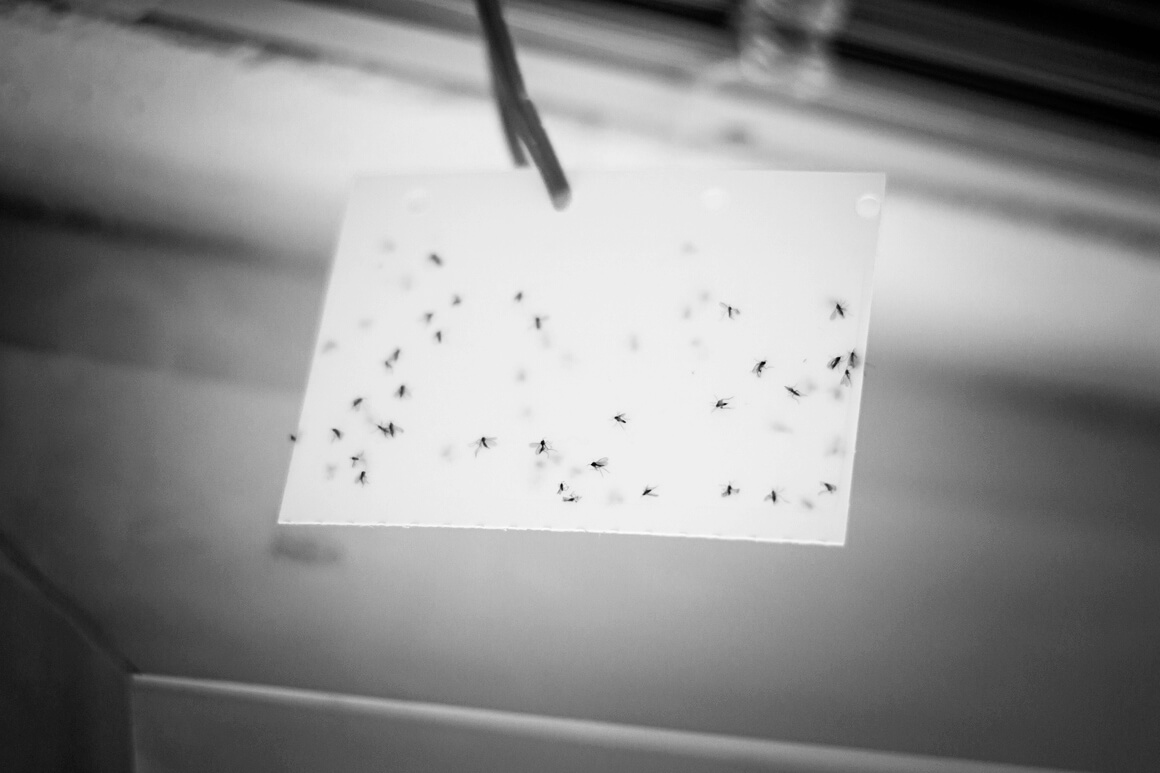BackHow to Prevent Fungus Gnats Naturally

Prevent Fungus Gnats Naturally
Your houseplants bring color and serenity into your home. Unfortunately, they also attract fungus gnats. Fungus gnats are tiny fly or mosquito-like bugs with short lifespans that gravitate toward high-moisture areas inside your home, including around houseplants. The good news is it’s easy to prevent fungus gnats once you know these effective methods!
-
- Soil Selection: Always use reputable, bagged potting soil mix when potting a new houseplant. Potting soil mix that is pasteurized or sterilized shouldn’t have live eggs, larvae, or flies. Do not use soil from your yard, as it can introduce pests into your home. After potting your houseplant, add a layer of horticultural sand to the top of the soil. You can water the plant through the sand to deter fungus gnats from laying eggs in the pot. In addition to sand, other soil-topping products are made to eliminate fungus gnats from your potted plants.
-
- Prevent Spread: Before you bring home a new houseplant, look for evidence of fungus gnats. Flies are the most obvious pests since the larvae or eggs are very difficult to detect. It is a good idea to keep new plants away from your other houseplants for several days to monitor, especially if you have suspicions that they may be infected. Remember, fungus gnats don’t typically fly long distances unless they have to! Therefore, keeping new or infected plants in quarantine can effectively reduce the spread of fungus gnats to other potted plants. That way, you can focus your treatment on just one plant instead of them all! For severe infestations, some folks may choose to completely remove the infected plant from the house.
- Moisture Control: Fungus gnats use moist soil to breed, so they are drawn to excess moisture. Overwatering your plants can easily trigger a fungus gnat infestation. To prevent and battle fungus gnats, avoid overwatering your plants. Test your plants’ soil before watering, and only water when the top couple of inches of soil is dry. Many plant parents regularly overwater their plants; most houseplants can withstand drier conditions. Also, check the drainage tray at the bottom of the pot. The tray should be completely dry within a day of watering your houseplant without any standing water.
About Fungus Gnats
Fungus gnats are commonly confused with fruit flies, which are similar but have slightly different anatomy, feeding, and breeding habits. Rather than fruit, fungus gnats are drawn to the warm, moist, cozy environment you’ve created for your potted houseplants. They may hitch a ride into your home on a new houseplant friend you adopt or sneak in through doors, windows, or other small crevices in your home.
Fungus gnats reproduce by laying eggs in the top two inches of damp soil. The eggs hatch into larvae, feed on the organic matter within the soil for two weeks, and then pupate. Adult flies emerge days later and begin buzzing around. You’ll commonly see fungus gnats hanging out on the soil surface, edge of the pot, or maybe around the pot’s drainage holes. They often only fly in short bursts, and otherwise, crawl around.
Call on the Experts at Bug House
The customer comes first at Bug House. So, regardless of your concern, we do not hesitate to address it. For more than 30 years, our team at Bug House has been dedicated to providing the best pest control services to Georgia homeowners. Our commitment to quality and safety keeps our customers satisfied and bug-free. If you’re searching for a pest management partner to protect your home, give Bug House a call! Our experts are always ready to get to the bottom of your pest problems and help you kickstart an effective, long-term solution for your home. Our free home inspections include helpful insight and prevention tips from the Bug House pros!